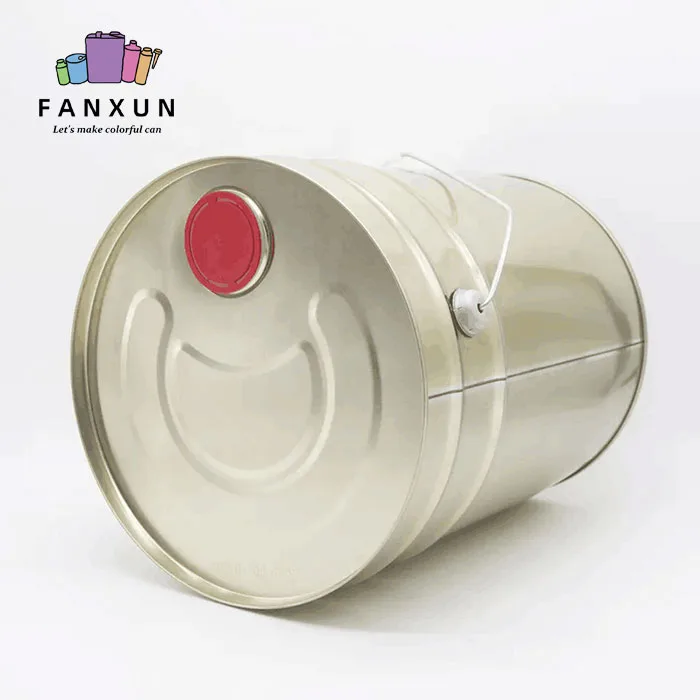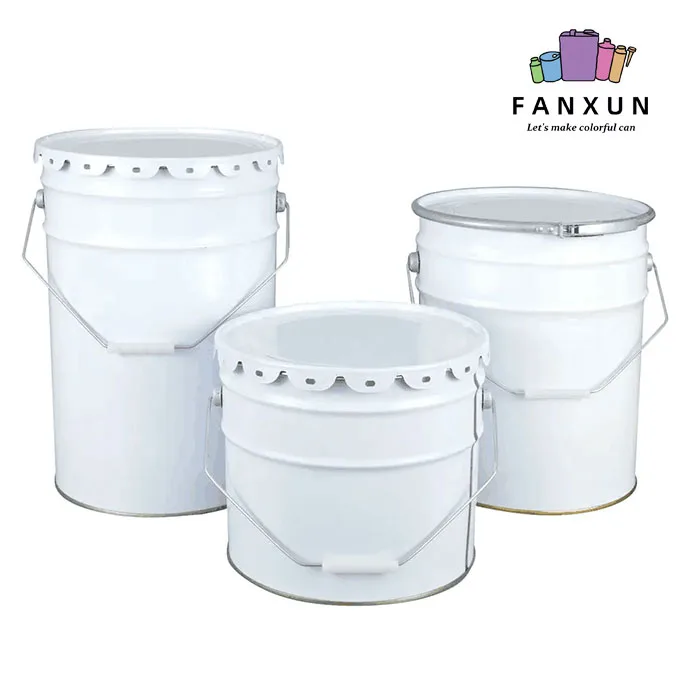Storing chemicals in metal drum requires careful planning and execution to ensure the safety and longevity of the material. Whether you are a professional who handles hazardous chemicals or a homeowner who owns potentially hazardous materials, knowing proper storage methods is crucial. In this article, we’ll explore best practices for storing chemicals in metal drums, covering everything from choosing the right drum to implementing safety measures.
From understanding the chemical compatibility of barrel materials to maintaining proper labeling and ventilation, every aspect is critical to a successful storage strategy. After reading this article, you will have a complete understanding of how to effectively and safely store chemicals in metal drums, minimizing risk and maximizing efficiency. So whether you want to comply with industry regulations or simply enhance your home storage system, this guide will give you the knowledge to make informed decisions.


Understanding the Importance of Proper Chemical Storage
Proper chemical storage is a critical aspect of ensuring safety in laboratories, manufacturing facilities, and various industries where chemicals are handled. The significance of adhering to stringent storage protocols goes beyond mere regulatory compliance; it directly impacts the well-being of individuals, the environment, and the overall integrity of operations.
- Safety First: The primary importance of proper chemical storage lies in ensuring the safety of personnel working with or around these substances. Many chemicals pose inherent risks such as toxicity, flammability, or reactivity. Employing appropriate storage measures, including the use of chemical cabinets, segregation based on compatibility, and adequate ventilation, helps prevent accidents, spills, and exposure to harmful substances.
- Environmental Protection: Improper chemical storage can have severe consequences for the environment. Spills or leaks can contaminate soil, water sources, and the air, leading to long-lasting ecological damage. Employing secure storage practices, including secondary containment systems and spill response plans, minimizes the risk of environmental pollution, aligning with sustainability goals and regulatory requirements.
- Preservation of Product Integrity: Certain chemicals are highly sensitive to environmental conditions such as temperature, humidity, or light. Proper storage ensures that these substances maintain their intended properties and efficacy. For example, storing chemicals in cool, dry conditions prevents degradation and ensures that they perform as expected when used in experiments or manufacturing processes.
- Compliance with Regulations: Various local, national, and international regulations govern the storage and handling of chemicals. Adhering to these regulations is not only a legal requirement but also a fundamental aspect of responsible corporate citizenship. Compliance ensures that businesses operate within the bounds of safety standards, minimizing the risk of fines, legal repercussions, and damage to reputation.
- Emergency Preparedness: Proper chemical storage is integral to emergency preparedness. In the event of a spill, leak, or unforeseen incident, having chemicals stored in an organized and controlled manner facilitates a swift and effective response. Emergency response teams can quickly identify the nature of the chemicals involved and implement the necessary containment and cleanup procedures.
Choosing the Right Metal Drum for Chemical Storage
When it comes to storing chemicals, selecting the appropriate container is a critical decision that directly influences safety, efficiency, and regulatory compliance. Metal drums, renowned for their durability and strength, are a popular choice for chemical storage. However, choosing the right type of metal drum is paramount to ensure the safe containment and preservation of the stored chemicals.
- Material Compatibility: The first consideration in choosing a metal drum for chemical storage is ensuring compatibility between the drum material and the stored chemicals. Different metals have varying resistance to corrosion and chemical reactions. For example, stainless steel drums are often preferred for their corrosion-resistant properties, making them suitable for storing a wide range of chemicals.
- Drum Coating and Linings: In addition to the material of the drum itself, the presence of coatings or linings can further enhance chemical compatibility. Some chemicals may react with the metal, and specialized coatings, such as epoxy or phenolic linings, can provide an additional layer of protection, preventing corrosion and chemical reactions that could compromise the integrity of the drum.
- Drum Capacity and Size: The size of the metal drum should align with the volume of chemicals to be stored. Choosing the right capacity prevents overfilling and ensures adequate space for thermal expansion or contraction, minimizing the risk of leaks or spills. It’s essential to consider both the volume of the chemicals and the space available for storage.
- Drum Design and Features: The design of the metal drum can significantly impact its usability for chemical storage. Look for drums with secure closures, such as tight-fitting lids or bungs, to prevent leaks and evaporation. Additionally, drums with built-in vents or pressure relief mechanisms can be crucial for storing volatile substances, allowing for the release of pressure and preventing the drum from becoming over-pressurized.
- Regulatory Compliance: Different industries and regions have specific regulations governing the storage of chemicals. It is imperative to choose metal drums that comply with these regulations. This includes meeting standards for structural integrity, labeling, and any specific requirements for the type of chemicals being stored. Compliance ensures a safe working environment and protects against legal repercussions.
Types of Chemical Supplies Suitable for Metal Drums
Metal drums are versatile containers widely used for the storage of various chemical supplies. The choice of metal drums is driven by their durability, strength, and compatibility with a range of chemicals. Understanding the types of chemical supplies suitable for metal drums is essential to ensure proper containment and adherence to safety standards.
- Corrosive Chemicals: Metal drums, especially those made from stainless steel or specialty alloys, are well-suited for storing corrosive chemicals. Corrosive substances can degrade certain materials, but metals provide a robust barrier, preventing chemical reactions that could compromise the structural integrity of the drum.
- Flammable Liquids: For the storage of flammable liquids, such as solvents, fuels, or certain industrial chemicals, metal drums are a preferred choice due to their fire-resistant properties. Steel drums, in particular, are known for their strength and ability to withstand the pressures associated with flammable substances.
- Hazardous Waste: Metal drums are commonly used for the collection and storage of hazardous waste materials. These drums can handle a variety of hazardous substances, ranging from acids and bases to toxic chemicals. The durability of metal drums ensures the containment of potentially harmful materials without the risk of leakage.
- Oxidizing Agents: Chemicals with oxidizing properties, which may react violently with other substances, require careful storage. Metal drums, with their stability and resistance to chemical reactions, are suitable for containing oxidizing agents. This prevents unintended reactions that could lead to hazardous situations.
- Water-Reactive Chemicals: Some chemicals react violently with water, posing a risk of corrosion and the release of toxic gases. Metal drums offer a secure containment solution for water-reactive chemicals, protecting both the substance and the environment from potential harm.
- High-Pressure Gases: Certain metal drums are designed to withstand the pressure associated with storing high-pressure gases. These drums are equipped with reinforced walls and secure closures to prevent leaks and ensure the safe storage of compressed gases.
- Non-Hazardous Chemicals: While metal drums are commonly associated with hazardous materials, they are also suitable for storing non-hazardous chemicals. The durability and versatility of metal drums make them a reliable choice for a wide range of chemical supplies, providing secure storage for both hazardous and non-hazardous substances.
Maintenance and Inspection of Metal Drums for Chemical Storage
Proper maintenance and regular inspection of metal drums used for chemical storage are crucial practices to ensure the continued safety, integrity, and efficiency of these containers. As chemical storage is often associated with potential hazards, adopting stringent maintenance protocols becomes paramount for preventing accidents, spills, and environmental contamination.
In conclusion
The safe and efficient storage of chemicals is a multifaceted responsibility that demands meticulous attention to detail, adherence to regulations, and a commitment to ongoing maintenance. By understanding the properties of the stored chemicals, choosing suitable containers, and implementing robust storage practices, the risks associated with chemical storage can be minimized.
